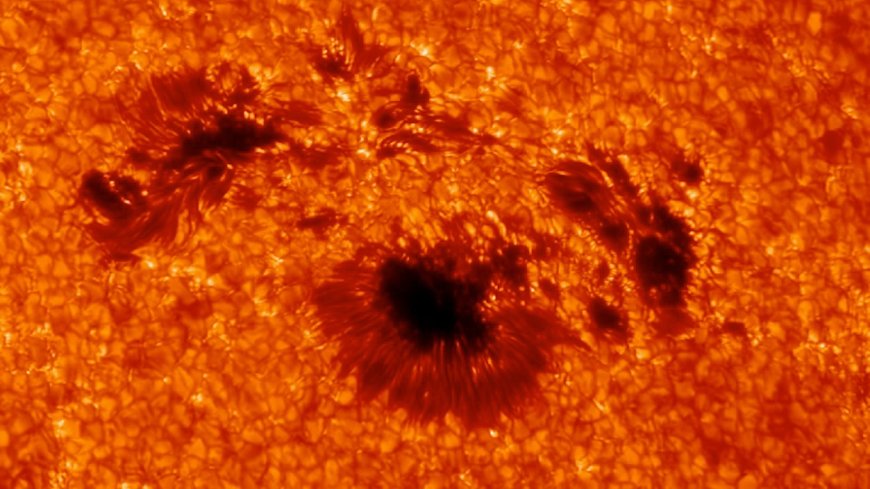Giant 'Pimple' Detected on Distant Star for Over 7 Years
A massive spot covering 7% of a distant star's surface has been discovered, lasting at least seven years. This unusual finding sheds light on the star's characteristics and challenges traditional methods of exoplanet detection.

Sunspots were photographed in 2014. Detecting small spots on distant stars is challenging due to tiny brightness fluctuations. However, a new method has revealed a giant spot on an alien star.
Most exoplanets are found as they transit their parent stars. A recent study uncovered a giant spot on a star when a giant planet crossed it, causing peculiarities in the transit signature. This spot covers 7% of the star's surface and has existed for at least seven years.
Over 6,000 exoplanets have been confirmed, with the transit method being the most successful. This technique measures the decrease in a star's brightness when a planet passes in front of it.
The planet TOI-3884 b, discovered by NASA's TESS, creates a unique two-bump drop in its star's light curve. Astronomers believe this is due to a starspot on the star's surface.
The starspot on TOI-3884 is large, covering 7% of the star's surface and has been present for at least seven years. This spot differs from sunspots in size and lifespan.
The study suggests that the planet's orbit is highly tilted, causing the peculiar transit pattern. Observations and computational models helped researchers understand this phenomenon.
TOI-3884 b's orbit is unusual, possibly due to interactions with other celestial bodies or the original tilt of its birth material.
According to the source: Live Science.
What's Your Reaction?
 Like
0
Like
0
 Dislike
0
Dislike
0
 Love
0
Love
0
 Funny
0
Funny
0
 Angry
0
Angry
0
 Sad
0
Sad
0
 Wow
0
Wow
0


























































































































































































